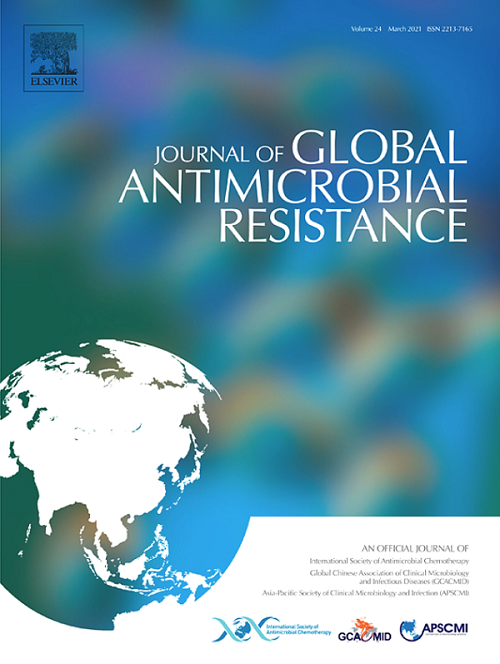Clinical and molecular characteristics of KPC-producing Klebsiella pneumoniae bloodstream infections: Results of a multicentre study
IF 3.7
3区 医学
Q2 INFECTIOUS DISEASES
引用次数: 0
Abstract
Objective
Klebsiella pneumoniae carbapenemase-producing K. pneumoniae (KPC-Kp) is a great cause of concern and often associated with bloodstream infections (BSIs) and a high mortality rate. Here we identified the risk factors of KPC-Kp BSIs observed in three Italian hospitals and studied the epidemiology of KPC-Kp strains.
Methods
A retrospective analysis of KPC-Kp BSIs was performed from 2014 to 2019 at three hospitals in central Italy (Ancona, Pesaro-Fano, and Perugia). Uni- and multi-variable analyses were performed to evaluate the clinical variables associated with mortality. Pulsed-field gel electrophoresis assay and whole-genome sequencing analysis of KPC-Kp isolates was carried out to identify antibiotic resistance genes and epidemiological relationships among the strains.
Results
A total of 219 patients were considered. Mortality on day 30 was 32%, with older age, APACHE II score ≥11, Charlson Comorbidity Index ≥4, and solid tumours more frequent in patients with a negative outcome. Positive outcomes were related to combination therapy with at least two active drugs that also emerged in multivariate analysis. Most KPC-Kp strains belonged to three major sequence types (ST512, ST307, and ST101), while the most common carbapenem resistance gene variant was blaKPC-3.
Conclusions
KPC-Kp BSIs remain a challenging infection with a high crude mortality rate. Patient conditions and comorbidities correlate with negative outcomes, while active drugs are correlated with better outcomes. Although collected from different hospitals, the KPC-Kp strains were epidemiologically related, suggesting inter-hospital diffusion. Timely and effective therapy, together with epidemiological surveillance, are crucial to reduce mortality and prevent the spread of nosocomial clones.
求助全文
约1分钟内获得全文
求助全文
来源期刊

Journal of global antimicrobial resistance
INFECTIOUS DISEASES-PHARMACOLOGY & PHARMACY
CiteScore
8.70
自引率
2.20%
发文量
285
审稿时长
34 weeks
期刊介绍:
The Journal of Global Antimicrobial Resistance (JGAR) is a quarterly online journal run by an international Editorial Board that focuses on the global spread of antibiotic-resistant microbes.
JGAR is a dedicated journal for all professionals working in research, health care, the environment and animal infection control, aiming to track the resistance threat worldwide and provides a single voice devoted to antimicrobial resistance (AMR).
Featuring peer-reviewed and up to date research articles, reviews, short notes and hot topics JGAR covers the key topics related to antibacterial, antiviral, antifungal and antiparasitic resistance.
 求助内容:
求助内容: 应助结果提醒方式:
应助结果提醒方式:


